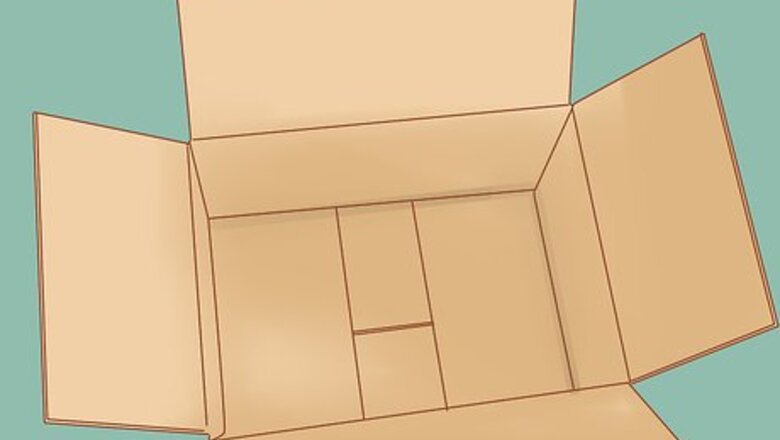
views
Helping Your Female Cat Give Birth and Care for Newborns (0 to 4 Weeks)
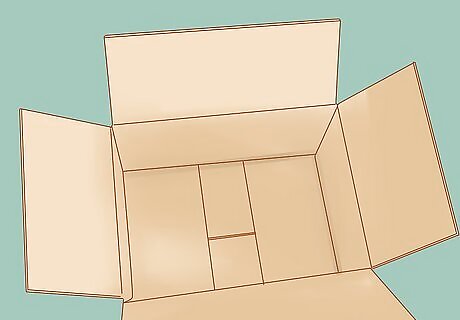
Provide a quiet place for the birth. Your female cat will chose a place where she feels safe to give birth. By all means, provide a large cardboard box, turn it on its side and line it with warm, dry bedding–but don't be disappointed if she has other ideas. Instinct tells her to find a quiet concealed spot, such as under a bed, behind a sofa, or inside a kitchen cabinet. To learn more about helping your cat give birth, see this article.
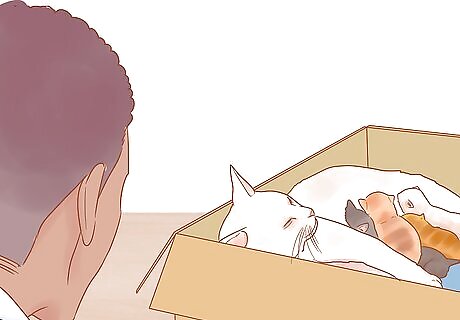
Do not disturb during the birth and first two days. The first 48 hours is a crucial time for the mother to bond with her kittens, so try not to disturb her. If she gives birth under your bed, leave her there. Moving the newborn kittens will distress the mother and in the worst scenario could cause her to reject them. Once she is firmly bonded, at around four or five days, if you feel it's necessary to move the kittens, do it then.
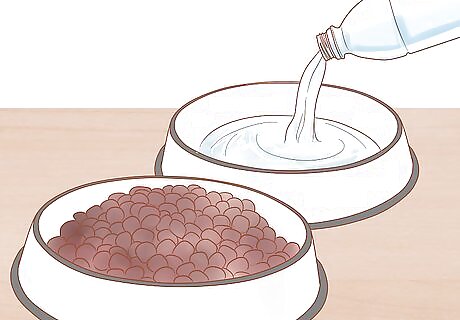
Leave food, water, and cat litter in the room. The mother won't want to leave her kittens for long in the first two weeks of their life. Always put food and water within stretching distance of her nest, and if possible, offer a litter tray in the same room so that she can stay within sight and sound of the kittens. If food is in another room, some mothers chose to starve rather than leave their newborn kittens to find it.
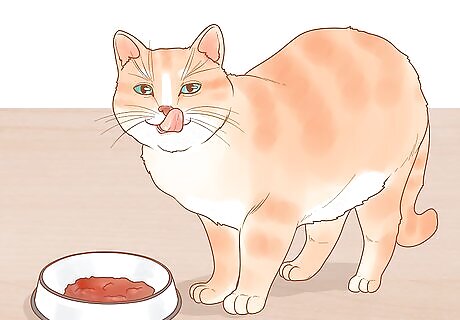
Feed the mother extra calories. She needs the extra calories to make milk for her kittens. Feed her kitten food, which has more calories than adult cat food.
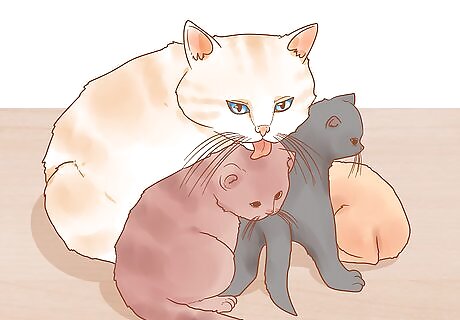
Let Mom do most of the clean-ups. Instinct helps the mother to keep the nest clean. The newborn kittens do not urinate or defecate on their own, so the mother has to lick their bottoms before and after feeding to stimulate elimination. This way she keeps the nest clean. Try to disturb the nest as little as possible. If the bedding becomes soiled, wait until Mom hops out for a toilet break herself to take out the dirty bedding and pop in clean.
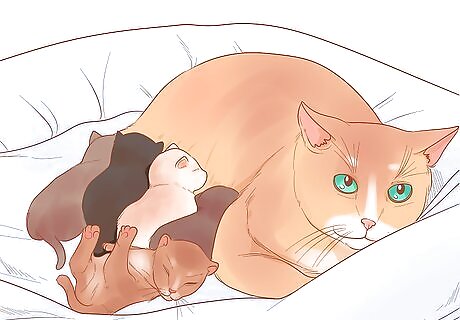
Check that the kittens are all nursing. If the mother cat is present, the kittens should nurse from her immediately after the last kitten is born. Newborn kittens will spend most of their time sleeping, waking up to nurse every two to three hours. If they do not appear to be nursing, or one kitten is being pushed away from the mother cat by its siblings, supplement with bottle feeding as described in Part 2.
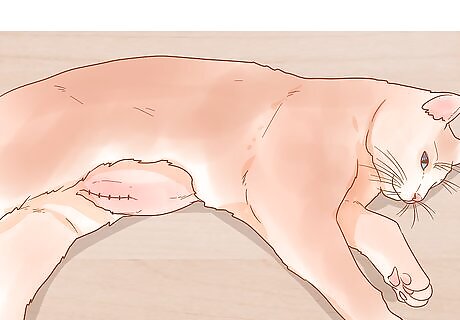
Consider spaying the mother cat. Having your mother cat spayed (removing her womb) after the kittens are done nursing (they should be weaned by about 8 weeks) is highly recommended by veterinarians and humane organizations. This helps prevent the suffering of unwanted kittens, and can also have some health benefits for the spayed cat. Be aware that a cat can potentially fall pregnant again as little as three to four days after giving birth, so keep her indoors to avoid this risk.

Start to think about deworming the kittens. This can happen as early as two weeks if necessary. Consult a veterinarian for proper medication and dosing.
Caring for Orphan Kittens (0 to 4 Weeks)

Feed the kittens a milk replacement. Powdered cat milk replacer (such as Cimicat) can be purchased from the vet clinic, major pet stores, or on the Internet. Another good milk replacer is KMR. This is the cat equivalent of infant formula, with the same composition as queen's (mother's) milk. The milk replacer has guidelines as to how much to feed in each meal. Do not feed cow's milk to the kitten as the lactose is likely to upset the kitten's stomach. If you have no milk replacement and a hungry kitten, offer some cooled boiled water in a dropper or syringe until you can get to the vet clinic or pet store. The water keeps the kitten hydrated and won't upset her tummy.
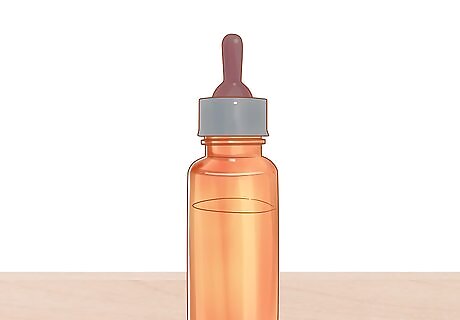
Use a kitten feeding bottle with a specially designed kitten teat. You can purchase this at a vet clinic, a major pet store, or on the Internet. In an emergency use an eyedropper or a small syringe to drip the milk replacement into the kitten's mouth.

Burp the kittens after each meal. You do this much as you would a baby: hold the kitten up straight against your shoulder, or place one hand under its belly. Gently pat and rub its back.
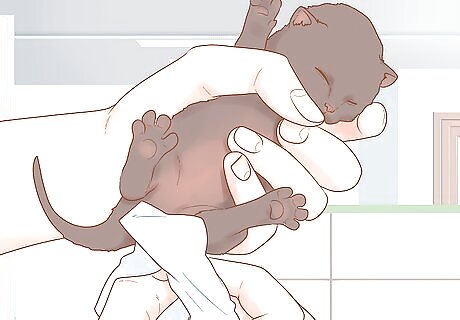
Stimulate the kittens to eliminate. Before and after each feed, wipe the kitten's bottom with a paper towel or gauze pad soaked in warm water. This stimulates the kitten to go to the toilet, which otherwise she would not do. Hold the kitten over a litter box and use the towel to rub the kitten's genitals and anal region after every meal. Continue to do this until the urination and defecation is over (when nothing else is coming out). Rub in just one direction–rubbing back and forth is irritating. Cotton balls or pads are not recommended because they shed.

Look for signs of healthy elimination. Urine should be pale yellow and odorless, and stools should be yellowish-brown, formed in tiny logs. Dark, pungent urine is a sign of dehydration; green stool may be a sign of over-feeding, while white stool could indicate malabsorption, a serious problem. Call your vet if you have any concerns. If the kitten does not urinate for 12 hours, take it to the vet's immediately. Most kittens poop once a day, but individual schedules vary. Take it to the vet's if it hasn't pooped in more than two days.
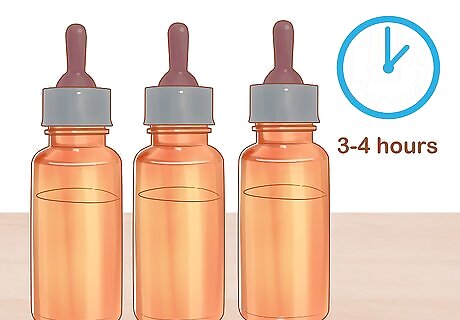
Follow the kittens' meal times. In the first two weeks of life the kitten feeds every two to three hours around the clock. The kitten will tell you it is hungry by crying and wriggling around as if hunting for a nipple. A full kitten often falls asleep while suckling and has a rounded belly. After two weeks, the feeds can be stretched out to to every three to four hours, with a gap of six hours overnight.
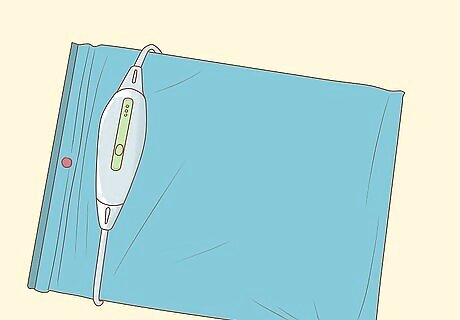
Keep the kittens warm with a covered heating pad. Neonatal kittens (under two weeks of age) cannot regulate their body temperature and usually keep warm by snuggling up to their mother. You can simulate this situation by keeping them on a heated pad designed for puppies or kittens. Avoid putting them in direct contact with the pad: if the kitten is in direct contact with the heat pad, she might be at risk of either local burns or overheating. However, these pads usually come in a fleece cover so it shouldn't be a problem, except for when you remove the cover for washing, in which case substitute a towel. As the kitten gets older (over two weeks), she is able to move away from the heat if she gets too hot.
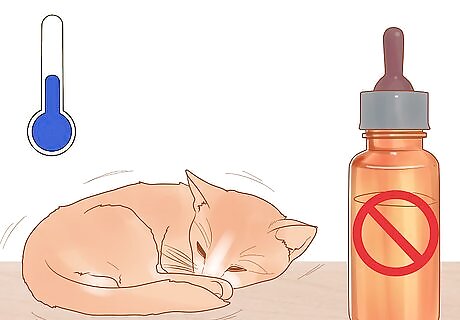
Never feed a cold kitten. If a kitten's body feels cold, you need to warm her up gradually. A kitten is cold if her ears and/or the pads of her feet feel chilly to the touch. Put your finger in her mouth: if it feels cold, the kitten's body temperature is too low, which can be life-threatening. Warm her up slowly by wrapping her in a fleece blanket and holding her next to your body, rubbing her gently with your hands for one to two hours.
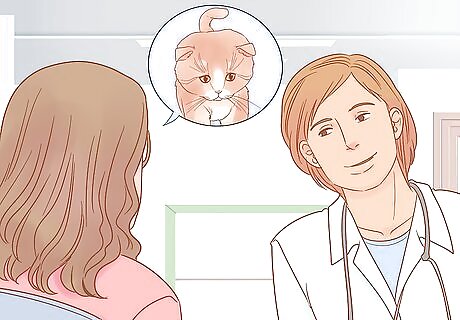
Learn more about taking care of orphaned kittens. You can start with this article. Contact a veterinarian for information and suggestions. Your vet can also provide vaccinations against common diseases and deworm the kittens. Orphaned kittens may be dewormed starting at two weeks, and, depending on their situation, can be vaccinated starting anywhere from two to eight weeks. They may have weaker immune systems because, unlike other kittens, they don't get the antibodies from their mother's milk.
Weaning and Socializing Your Kittens (4 - 8 Weeks)
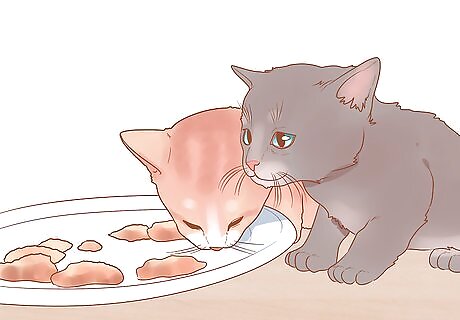
Start to leave out extra kitten food. If Mom's around, the weaning process (switching from mother's milk to solid food) happens naturally from about four weeks. At this point, Mom gets tired of the kittens chewing on her teats and starts to spend time apart from them. In turn, the hungry kittens investigate food options around them and usually discover Mom's food. As the kittens start to take mouthfuls of her food, they begin the weaning process.
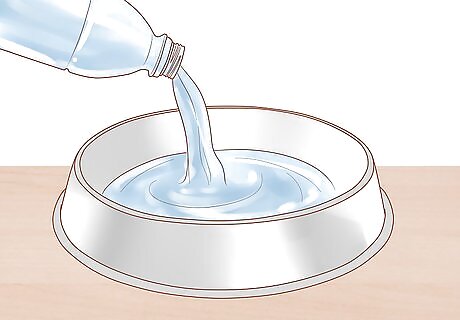
Provide water. Kittens do not need water until they start weaning, roughly around four weeks old. Any kitten above this age, however, should have constant access to a full water bowl. Change this water whenever it gets dirty (as it tends to if kittens step and/or poop in the bowl).

Put down kitten food for hand-reared kittens. If you've been bottle-feeding the kittens yourself, the weaning process is similar. It sometimes helps to put some milk-replacer in a saucer and put your finger just beneath the surface to teach the kitten to lap first. Then, it's a matter of mashing up some wet kitten food with the milk-replacer to make a porridge for the kitten to lap. As she gets the hang of that you can thicken up the porridge until she's happily taking most of her calories in solid form.
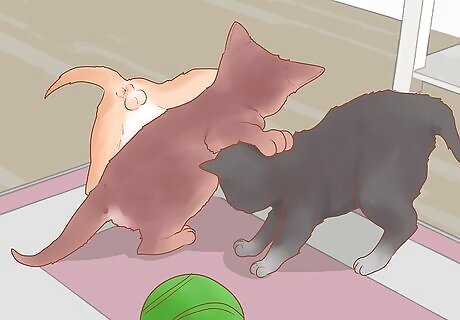
Socialize your kittens by introducing them to new things. Socialization is crucial during the three-to-nine-week window. From two to three weeks of age, handle the kittens as much as possible every day. Introduce them to different sights and sounds, such as the vacuum cleaner, hair dryer, men with beards, children . . . anything you can think of. During this six-week window the kitten is most open to new experiences, and what she encounters now she will accept without question as an adult, making her into a happy, well-adjusted and sociable cat. Use cat toys, balls, string, or other objects to play with them and keep them entertained, but don't use objects small enough for them to swallow. (Note that cats may eat string or yarn if left unsupervised, so only allow this in your interactive play. It's a potential choking hazard.) Don't teach your kittens that human fingers and hands are toys, or the kitten may continue to bite and scratch them as an adult.
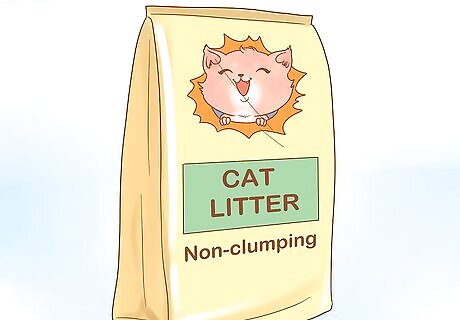
Provide non-clumping litter. Choose a spot for the litter box carefully, as once used to it, the kittens will probably continue to use that spot. If litter-training the kittens yourself, simply place the kittens there after each meal, or whenever a kitten starts to crouch and scratch the floor in preparation for pooping. Clean the litter box at least once a day, or the kittens may stop using it. Choose a box with low sides so it's easy for the kittens to get in and out. Avoid clumping litter, as kittens may eat the clumps, which could potentially harm their digestion. If a kitten seems like it doesn't want to stay in the litter box, gently take its paws and imitate digging in the litter. Then, provide the kitten with privacy so it can dig a hole, do its business, and cover it up with some litter.

Keep the cat inside until it has all its shots. Once your veterinarian allows it, you can let the cat outside to explore. Make sure you keep a close watch on it until you're sure it knows to return home. Let the kitten outside when it's a bit hungry. Entice it back in by calling its name and showing it food. This will remind your kitten that while outdoors is fun, its final destination will always be your home.

Give kittens away responsibly. If selling or giving away the kittens, you should wait until they are at least eight weeks old, but twelve weeks old is preferred. Take them to a vet and start their shots before they leave you. Always follow-up with the new owners to make sure the kitten is getting her shots and is scheduled to be spayed or neutered. Exchange phone numbers with the new owners so you can confirm your kitten is in good hands, or in case the owners want to return her (at least you can help her find another home).
Taking Care of an Adopted Kitten (8 Weeks and Beyond)
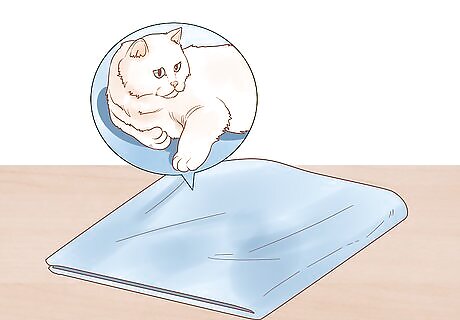
Ask the breeder or shelter for a blanket that smells like the kitten's mother and siblings. These smells help to give the kitten comfort while she settles into her new home.

Ask what kind of food the kitten's been eating. Provide this for the first few days so that you don't make too many changes at once. When the kitten has settled in, this is your chance to change her food to one of your choosing, though do it gradually: replace a small quantity of her former food with the new food, increasing the amount slowly over the course of a week. If the kitten is eating dry kibble, leave a bowl out all day. If she is eating wet food, give her small meals every six hours. Continue to feed kitten food, not adult cat food, until one year of age.
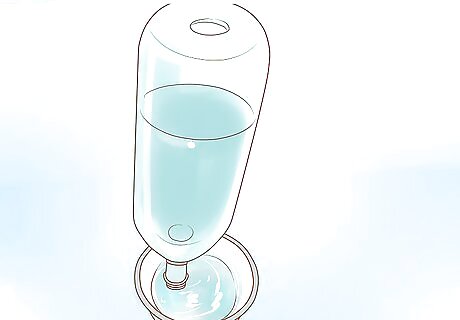
Provide water. Kittens above four weeks of age need water, so clean water should always be available. Cats tend to be more interested in water that is not next to their food bowl. Encourage drinking by placing water bowls in different spots through the house.
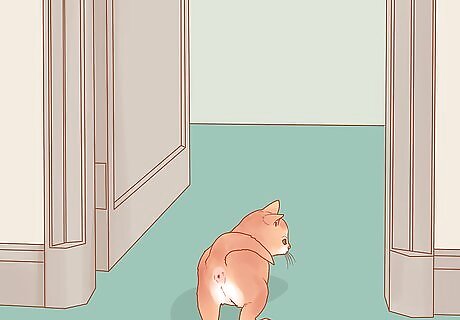
Introduce the kitten to your house slowly. Expose the kitten to just one room initially: the whole house will be too overwhelming on the first day. Set up a bed (preferably one that has sides and a roof so the kitten feels safe in a nest), with food and water in one corner of the room, and a litter tray in the opposite corner. Show the kitten where her facilities are, and then leave her to rest. It's been a big day for the little kitten so let her adjust and sleep for a few hours.
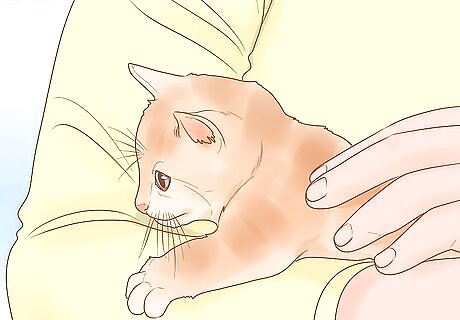
Give the kitten as much attention as you can. Spend as much time as possible grooming, playing, fussing and interacting with the kitten. This helps her to grow into a well-socialized, friendly adult.
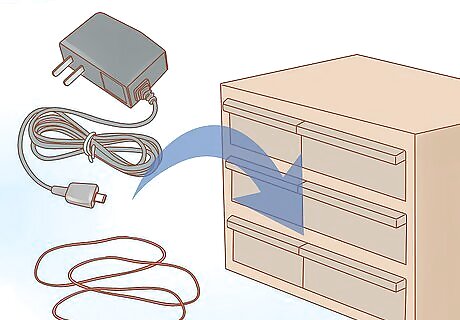
Keep the kitten and your possessions safe. Keep electrical cords and devices out of the kitten's reach to avoid her chewing on them. Child locks may be a wise investment for low cabinets if you have a particularly inquisitive kitten.
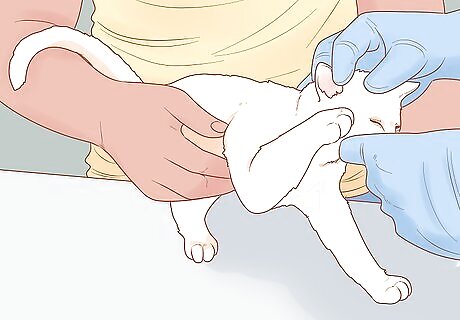
Plan a vet visit. At nine weeks old the kitten can have her first vaccination. This is the ideal time for a vet to examine her, worm her and start vaccinations. The basic kitten vaccine includes protection against cat flu and infectious enteritis. There is also the option to vaccinate against feline leukemia.




















Comments
0 comment